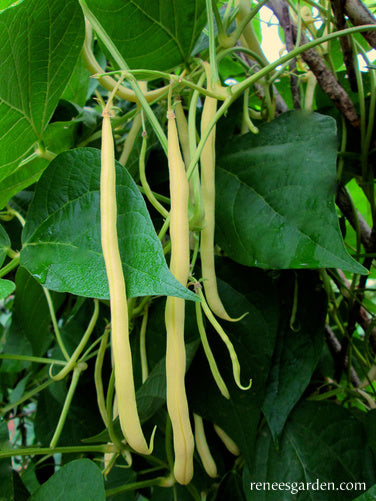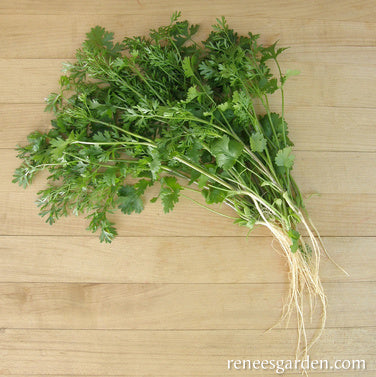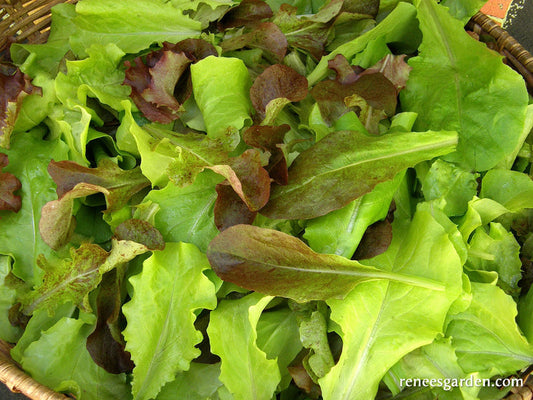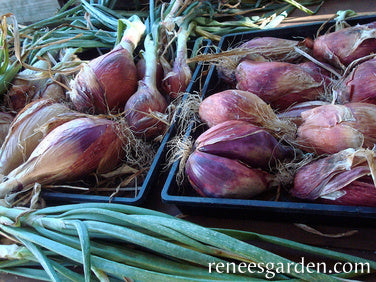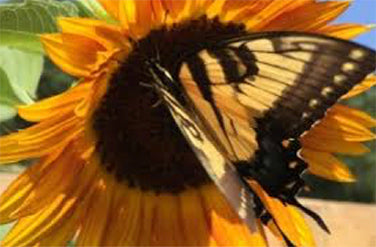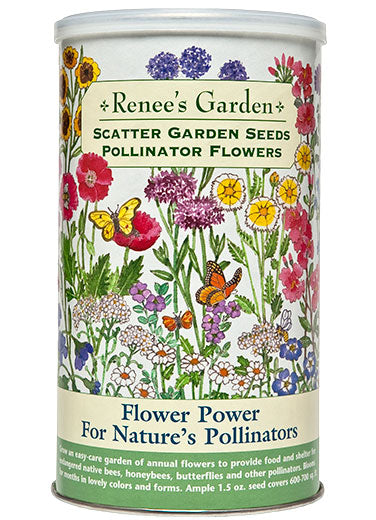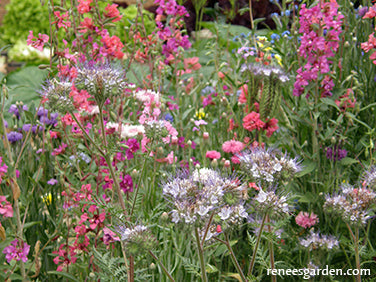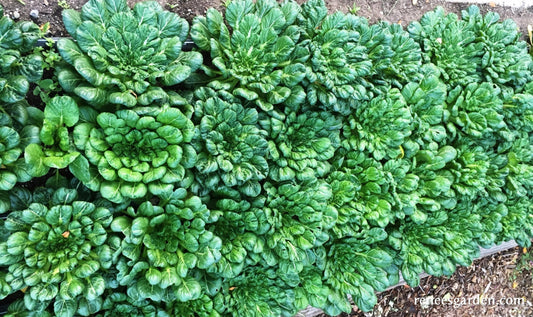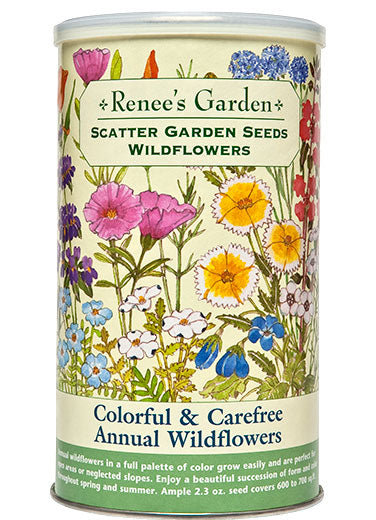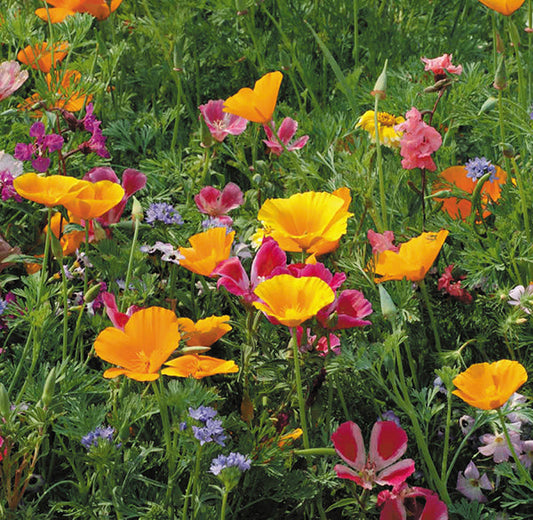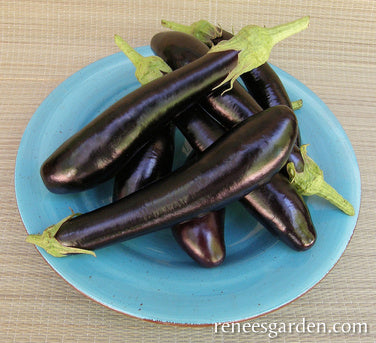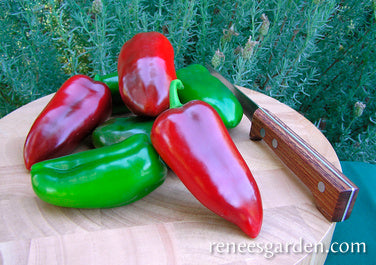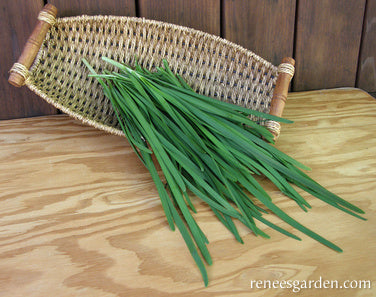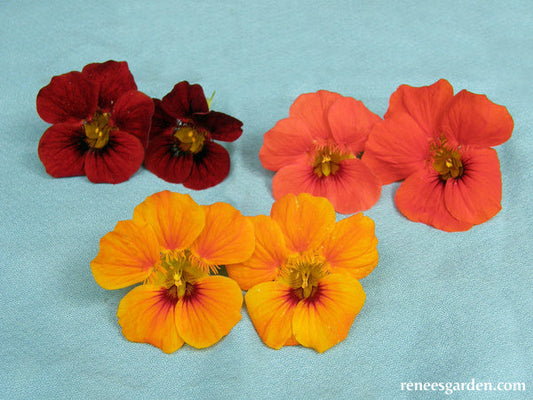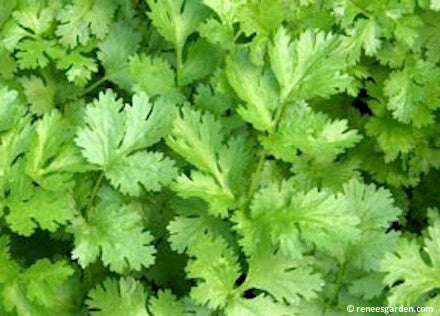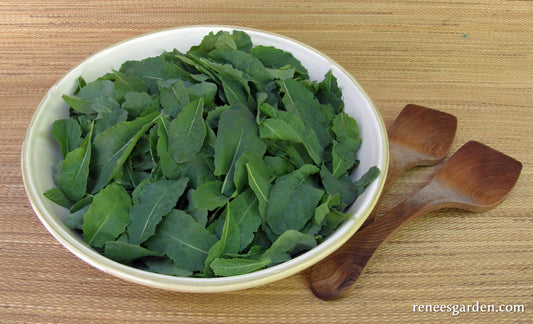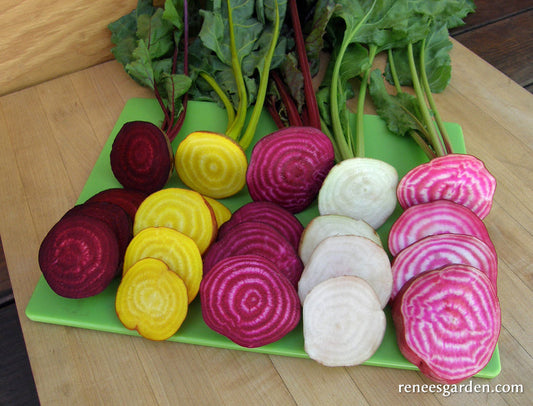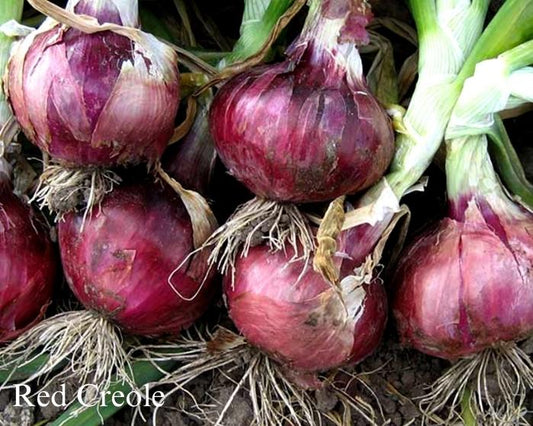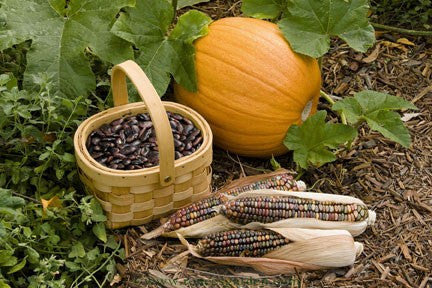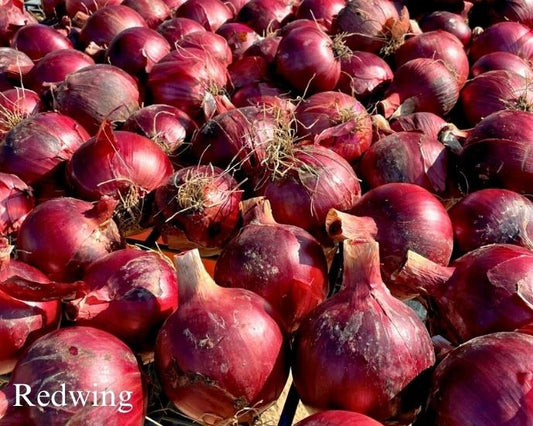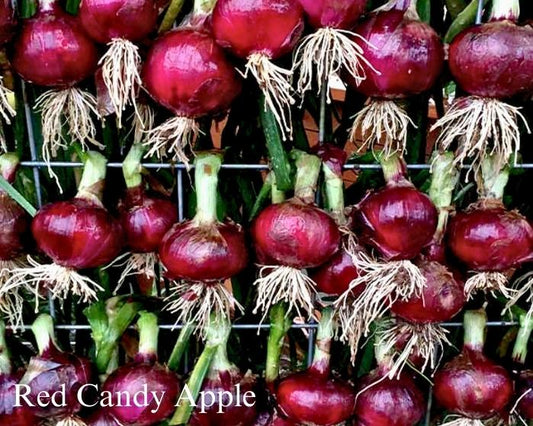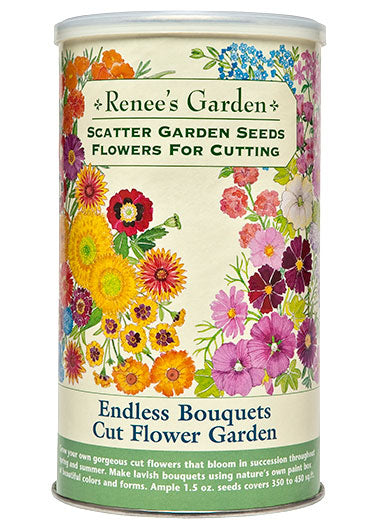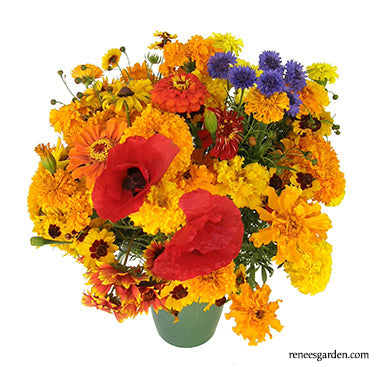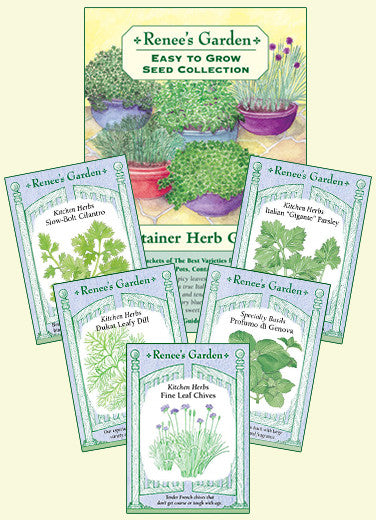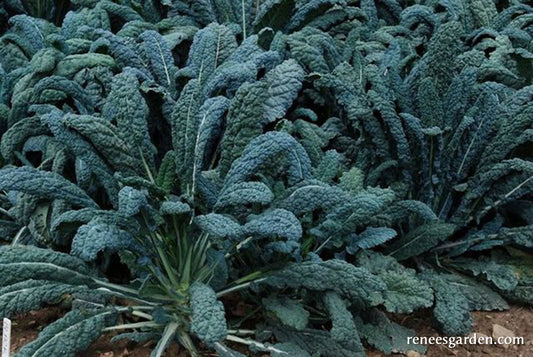All
-
Pole Filet Beans French Gold
START SEEDS OUTDOORS
In late spring, once night temperatures stay securely above 55°F (13°C), plant seeds in well-worked, fertile soil in full sun. Erect strong stakes, tripod poles or trellis at planting time to support vines. Plant 1 inch deep and 4 inches apart along a trellis. Or grow around tripods or stakes, planting 4 to 6 seeds about 4 inches from each pole, then thinning seedlings to 3 best plants per pole.
GROWING NOTES
Beans are an easy and reliable crop, but don’t plant seeds too early; cold conditions prevent good germination. If first sowing comes up unevenly, replant right away; new seedlings will catch up quickly. Birds are attracted to young seedlings; watch carefully and protect with netting if necessary. Avoid harvesting beans in wet conditions.
HARVEST AND USE
For the best yields, pick beans frequently, at least every 2 or 3 days. Filet beans are meant to be eaten when pods are slender, so harvest early, when still pencil-thin. These gourmet beans taste best freshly picked and quickly steamed or sautéed. For a beautiful and delicious. salad, blanch beans and toss them with an herbed vinaigrette, then combine with greens and Italian parsley.
Regular price $4.89Sale price $4.89Unit price / per -
Vietnamese Heirloom Bac Lieu Cilantro
ANNUAL
Spring/summer/fall harvest
Can handle light frostsEASIEST TO START OUTDOORS
Vietnamese Cilantro doesn’t transplant well; plant seeds directly in the garden. For continuous harvests, start in early spring and make successive sowings every few weeks until summer heat comes on strong. Sow again in cooler fall weather, especially in mild winter areas. Sow seeds in well-drained fertile soil 1 to 2 in. apart in rows 8 in. apart in full sun. Cover 1/4 inch deep and firm soil over seeds. Keep evenly moist as seedlings emerge. Thin seedlings 3 to 4 in. apart before plants get crowded.
GROWING NOTES
Vietnamese cilantro leafs out and flowers quickly as plants mature; lushest, leafy growth is in cooler temperatures of spring and fall. Plants thrive when well watered and thinned early so they have room to grow. If hot weather arrives early, plant in a spot with morning sun and afternoon shade. The lacy flowers of these plants attract beneficial insects and pollinating bees.
HARVEST AND USE
Vietnamese cilantro produces rosettes of leaves low on plants with more finely cut, serrated leaves towards the top. Harvest & use entire plant, including stems, leaves & even young flowers. Traditionally, Vietnamese cilantro is offered on a plate in the center of the table, so diners can help themselves. This delicious edible garnish & flavoring tastes similar to a delicate regular cilantro, but with an additional delicious hint of citrus spice.Regular price $3.69Sale price $3.69Unit price / per -
Cut & Come Again Lettuces Renee's Baby Leaf Blend
START SEEDS OUTDOORS
In early spring, sow seeds in finely worked soil in full sun. Shake seeds from the palm of your hand, broadcasting them about a half inch apart over the entire seedbed or in wide rows, and cover lightly and evenly with 1/4 inch of fine soil. Firm soil gently and water in with a fine spray. Keep seed bed evenly moist. Make small successive sowings until summer weather turns hot for a constant supply. Plant again in late summer for ample fall harvesting.
GROWING NOTES
This baby leaf blend thrives in mild weather with consistent moisture. To extend the sowing season into hot weather, sow in light shade or erect a canopy of loosely woven shade cloth over the seed bed. Birds are often attracted to tender young seedlings so protect them if necessary.
HARVEST AND USE
To harvest by the “cut and come again” method, wait until plants are 4 or 5 inches tall. Cut as much as you need, using scissors to shear off a patch of leaves 1 to 2 inches above the soil level. Water well and fertilize lightly and plants will regrow for several more cuttings. Dress with a simple vinaigrette to set off the wonderful colors, diverse fresh flavors and delicate textures of this delicious salad mix.
Regular price $4.89Sale price $4.89Unit price / per -
Heirloom Torpedo Onions Rossa Lunga di Firenze
FOR BEST RESULTS
For big bulbs: sow seeds in early spring as soon as soil can be worked; or in mild growing areas, sow seeds in fall to overwinter for spring growth. To Start Transplants: sow 1 in. apart in a container of seed starting mix and cover about 1/4 in. deep. Provide a strong light source until seedlings are 2 to 3 in. tall. Transplant 4 in. apart, burying crowns 1 in. deep. To Start Outdoors: sow seeds in well-worked, fertile soil in full sun. Space 1 in. apart in rows 8 in. apart. Cover 1/4 in. deep, firm soil well over seeds and keep evenly moist. Thin seedlings gradually to final 4 in. spacing, using the tasty thinnings.
GROWING NOTESBefore planting, thoroughly work compost or well-aged manure and bone meal into the soil. It is critical to weed onions carefully and mulch once soil warms up to conserve moisture. Side dress lightly several times during the growing season with a general purpose fertilizer; stop fertilizing during the last 2 months of growth.
Harvest bulbs about midsummer when bulbs are sized up and about half the onion tops are bent over. Stop watering and bend the rest down and lay in the sun for another 7 to 10 days or until tops dry. Store in a cool, airy place. Use soon as these heirlooms are not known as long keepers.
HARVEST AND USERegular price $3.39Sale price $3.39Unit price / per -
Bonus Pack Seeds for A Butterfly Garden
TWO DESIGN IDEAS
Plant your butterfly garden in a rectangular bed or border with tall, medium and low flowers from back to front, OR in a circle with tall flowers in the center, surrounded by the middle and then lower growing varieties.
For the back of the border in dramatic rows, OR planted in a circle garden as a central spiral, tall, branching Crimson Queen sunflowers offer both a convenient meal and a windscreen for your winged visitors.
At mid-level, Purity Cosmos' abundant snow-satiny white flowers with sunny centers dance and sway all summer, a magnet for air-waltzing butterflies.
At front of the border OR around the outer edge of the circle, low-growing Persian Carpet zinnias offer a beautiful tapestry of warm shades and provide nectar for many species.
CREATING BUTTERFLY HABITATButterflies are attracted to blossom shapes and colors, so it's important to plant in mass blocks instead of a few isolated plants here and there. Planting these flowers behind each other produces an ideal combination of different flowers at varying heights, offering your visitors a choice of where to feed and rest.
These flowers provide flower nectar for nourishment and fuel butterflies need for flying. Flowers unique personal attributes of color, scent and shape lure butterflies and ensure pollination. With each sip from the heart of a blossom, tiny grains of pollen gather on the butterfly’s body and then it helps to pollinate the garden as it flutters among flowers.
Sunny days in the garden are synonymous with a busy freeway of flying butterflies. The sun warms their wing muscles, enabling them to dart, soar and fly seeking nectar and pollinating your sun loving flowers. On gusty summer days, the taller cosmos and sunflowers offer comfortable protection from the wind. Offer butterflies a convenient drinking spot with a shallow bird bath or decorative stone water container.
Regular price $8.99Sale price $8.99Unit price / per -
Flower Power For Nature's Pollinators
NOTE
The seed mix is packed with a larger quantity of organic rice hulls to help space the tiny seeds. Before opening, shake canister thoroughly to mix them together.
HOW TO PLANT
As soon as ground can be worked in early spring, sow mix in ordinary garden soil in full sun. In mild climates, where the ground does not freeze hard in winter, seeds can also be planted in late fall to overwinter and bloom the next spring.
Prepare the planting area by removing all weeds, grass and large stones. Break up soil clumps and evenly loosen the top 2 inches of soil with a digging fork or shovel, then smooth out with a flat rake.
Shake the can thoroughly, then scatter the contents thinly and evenly over the prepared ground. Using your rake, lightly cover the seed mixture, about 1/4 inch deep, and then lightly firm the soil. Water thoroughly and evenly with a gentle mist. Keep soil bed evenly moist while awaiting germination and when the seedlings are small. Water regularly for best blossoms.
GROWING NOTES
Plants will flower in succession and bloom much longer if watered regularly. At season’s end, allow spent flowers to form pods and then drop their seeds to bloom again next spring.
ANNUAL POLLINATOR FLOWER MIX
INDIVIDUAL VARIETY NAMESMIX% Chinese Forget-Me-Not19.6Baby Blue Eyes19.6 Single Chinese Aster9.8 Cornflower, ‘Polka Dot Mix’9.8Shirley Poppy
7.8 Sweet Mignonette
7 Tidy Tips
4.9 Virginia Stock10 Creeping Daisy3 Clarkia3 Globe Gilia2.9 Lemon Mint2 California Bluebell2 Lacy Phacelia1.5 Tall White Alyssum1 Plains Coreopsis1 Inert Material: Organic rice hulls Regular price $16.95Sale price $16.95Unit price / per -
Heirloom Asian Greens Rosette Tatsoi
TO START OUTDOORS
In very early spring, plant in well-drained, fertile soil in full sun. Sow seeds 2 to 3 inches apart in rows spaced 8 to 12 inches apart. Cover 1⁄4 inch deep and keep evenly moist to ensure good germination. When well established, thin seedlings 6 to 8 inches apart, so they have room to mature into large rosettes.
TO START INDOORS
Several weeks before last frost, sow seeds in a container of seed starting mix 2 inches apart and cover 1⁄4 inch deep. Keep moist and provide a strong light source until seedlings are about 3 inches tall. Transplant outdoors 6 to 8 inches apart, as plants mature into large rosettes.
GROWING NOTES
Tatsoi thrives in rich soil and cool growing conditions. Space seedlings properly and keep well weeded and watered for best tasting, full heads. Feed several times during the quick growing season with fish emulsion or another high nitrogen fertilizer for best growth. Sow again in late summer for a fast growing fall crop.
HARVEST AND USE
Use early thinnings for salads. Cut whole mature rosettes of leaves when plump and well filled out – they reach a foot or more across! Use the pretty, dark green, teardrop shaped leaves for fresh, tasty salads, quick stir-fries, or braised until tender-crisp. Tatsoi is both mild and sweet tasting and absolutely chock full of vitamins and antioxidants.
Regular price $3.39Sale price $3.39Unit price / per -
Colorful & Carefree Annual Wildflowers
NOTE
Seeds are packed with a larger quantity of milled rice hulls to help space the tiny seeds when scattering. Before opening, shake the can thoroughly to mix them together so when you cast the seeds they are spaced with room for the plants to grow.
HOW TO PLANT
As soon as the ground can be worked in early spring, plant the seeds in ordinary garden soil in full sun. In mild climates, where the ground does not freeze hard in winter, seeds can also be planted in late fall to overwinter and bloom the next spring.
To prepare the planting area: remove all weeds, grass and large stones. Break up soil clumps and evenly loosen the top 2 inches of soil with a digging fork or shovel, then smooth out with a flat rake.
Shake the can thoroughly before opening, then scatter the contents thinly and evenly over the prepared ground. Using your rake, cover the seed mixture 1/4 inch deep and lightly firm the soil. Water with a gentle mist thoroughly and evenly. Keep the soil moist while awaiting germination and while the seedlings are small.
GROWING NOTES
When wildflower plants are mature they can handle somewhat dry conditions, but will thrive and bloom much longer if watered regularly. For indoor bouquets, cut the flowers as blossoms open. At season’s end, let spent flowers form pods and drop seeds to bloom again the next spring.
WILDFLOWER MIX
INDIVIDUAL VARIETY NAMES MIX% Candytuft
Iberis umbellata18 Baby Blue Eyes
Nemophila menziesii
16 Five Spot
Nemophila maculata
16 Chinese Houses
Collinsia heterophylla12 African Daisy
Dimorphotheca aurantiaca8 CA Poppy
Eschscholzia californica7 CA Bluebell
Phacelia campanularia5 Shirley Poppy
Papaver rhoeas5 Bird’s Eyes
Gilia tricolor4 Dwarf Godetia
Clarkia amoena2 Clarkia
Clarkia unguiculata2 Globe Gilia
Gilia capitata2 Tidy Tips
Layia platyglossa2 Inert Material: Clean milled rice hulls NOTE
The seed mix is packed with a larger quantity of organic rice hulls to help space the tiny seeds. Before opening, shake canister thoroughly to mix them together.
Regular price $16.95Sale price $16.95Unit price / per -
Heirloom Italian Eggplant Violetta Lunga
BEST TO START INDOORS
In early spring, start indoors about 2 months before outdoor night temperatures are reliably in the 50-55°F (10-13°C) range. Sow seeds 1/4 inch deep and 1 inch apart in a container of seed starting mix. Keep moist and warm 80-85°F (27-30°C) and provide a strong light source until ready to plant outside. When seedlings are 2 inches tall, transplant into deeper individual containers. Maintain at 70-75°F (21-24°C). Feed with half-strength fertilizer every 2 weeks until weather is warm enough to gradually acclimate seedlings to outdoor conditions. Transplant 2 feet apart into rich soil in full sun.
GROWING NOTES
Don’t transplant these heat-lovers outdoors until nights stay securely above 55°F (13°C). Prepare soil well with aged manure or compost. Plant only robust seedlings with well-developed roots and mulch well. Fertilize plants regularly, at least monthly, throughout the growing season.
HARVEST AND USE
Pick when fruits have sized up and are firm fleshed and glossy. Slice and quickly sauté, or cut in half lengthwise, brush with good olive oil and a little chopped garlic, and then roast or grill until soft and succulent. Serve sprinkled with fresh chopped herbs like basil, dill or thyme and grated fresh Parmesan.
Regular price $4.89Sale price $4.89Unit price / per -
Container Sweet Pepper Pizza My Heart
STARTING SEEDLINGS
Start indoors 8 weeks before outdoor night temperatures reach 55°F (13°C). Sow seeds 1/4 inch deep and 1 inch apart in a container of seed starting mix. Keep moist but not soggy, and very warm (80°F (27°C). Provide a strong light source until seedlings are ready to plant outside. When seedlings are 2-3 inches tall, transplant into 4 inch pots. Keep at 65-70°F (18-21°C). Feed with half-strength liquid fertilizer every 2 weeks.
When night temperatures reach 55°F (13°C), acclimate seedlings to outdoor conditions. If planting in garden beds, space 2 to 2 1/2 feet apart in rich soil in full sun.
CONTAINER GROWING
Transplant each plant into a pot at least 15 inches tall and deep. Using fresh potting mix prevents soil borne diseases. Fertilize twice per month for best plants and yields.
GROWING NOTES
Peppers need full sun at least 6 hours per day. Mulch well to maintain even moisture. Provide short stakes or cages to support heavy sets of ripening fruit. Check containers often and water regularly; when plants begin setting fruit they may require daily watering.
HARVEST AND USE
Harvest when peppers have ripened to red. Cut rather than pull peppers from plants. Enjoy them sliced up raw, sautéed, stir-fried, grilled or piled on pizza. Discard all pith and seeds to avoid even a hint of heat.
Regular price $3.39Sale price $3.39Unit price / per -
Heirloom Radishes German Giant
START SEEDS OUTDOORS
In early spring as soon as ground can be worked, sow radish seeds in well-worked, fertile soil in full sun. Plant seeds 1/2 inch deep and 1 inch apart, in wide rows 6 inches apart. Keep soil evenly moist and well weeded. If first sowing comes up unevenly, replant right away. Sow again in late summer for a fall crop.
GROWING NOTES
Sow this quick cool season crop wherever you intend to plant heat lovers later. Radishes thrive with crisp flesh and mild flavor when given consistent moisture. Sow small amounts a week apart to mature in warm but not hot weather. Thin quick-growing seedlings early to 2 inches apart so roots have room to size up. Protect radishes with floating row covers if marauding birds or flea beetles that chew holes in the leaves are a problem.
HARVEST AND USE
Pull young round roots at large marble size. If weather turns hot, harvest, cut off tops and store in fridge. Radishes’ flavor is mildest in cool weather, spicier in hot conditions. Picked young and tender, radishes make crispy snacks and add appealing color and crunch to green salads. Delicious sliced and used for dipping with hummus or other creamy spreads.
Regular price $4.89Sale price $4.89Unit price / per -
Heirloom Herbs Garlic Chives
PERENNIAL
Spring/summer/fall harvest
Frost hardyTO PLANT DIRECTLY OUTDOORS
In the cool weather of early spring, sow clusters of 7 to 10 seeds 8 to 10 inches apart in well-worked, fertile soil in sun or part shade. Cover 1/4 inch deep and press soil firmly over seeds. Keep evenly moist as seeds germinate slowly over several weeks. Emerging seedlings have slender, straight leaves.
TO START EARLY INDOORS
In early spring, sow seed thinly in a container of seed starting mix and cover 1/2 Inch deep. Keep evenly moist as seedlings slowly emerge and provide a good light source. Gradually acclimate to outdoor conditions before transplanting clusters of 7 to 10 seedlings, planting each cluster 8 inches apart.
GROWING NOTES
Garlic chives grow slowly at first, but soon mature into sturdy bright green mounds crowned with pretty white edible blossoms. After bloom finishes, shear entire plant back to 4 inches to encourage regrowth of tender new leaves. These hardy, self-sufficient plants are attractive additions to the flower or herb garden.Regular price $4.89Sale price $4.89Unit price / per -
Hanging Basket Nasturtiums Little Firebirds
ANNUAL
Spring/summer/fall bloom
Frost tenderEASY TO START OUTDOORS
In spring once all danger of frost is over, sow seeds in full sun (or part shade in hot climates). Nasturtiums need no added fertilizer. Poke seeds into well worked garden soil 1 in. deep and 3 to 4 in. apart. Press soil firmly over seeds and keep moist. When seedlings are several inches tall, thin to 6 in. apart, so plants can spread.
Container planting: use pots or baskets a minimum of 8-10 in. deep and 12 to 15 in. across, filled with fresh potting mix. Poke seeds in 1 in. deep and 1 1/2 in. apart. When seedlings are established, thin to 3 in. apart, so plants can spread.
TO START EARLY INDOORS
Three weeks before last expected frost date, poke 2 seeds one inch deep into individual 4 in. pots of seed starting mix. Provide a strong light source. When seedlings have several sets of leaves, pinch out the weaker seedling, leaving 1 per pot. When weather reaches 50°F (10°C). both night and day, acclimate to outdoor conditions. Transplant seedlings 6 in. apart in full sun. See Container Planting for suggested pot sizes.
GROWING NOTES
These lovely nasturtiums with handsome variegated leaves are easy to grow in any well-drained soil, They will quickly fill garden beds, planters or hanging baskets.
Regular price $3.69Sale price $3.69Unit price / per -
Bonus Pack Heirloom Cilantro
ANNUAL
Spring/summer/fall harvest
Can handle light frostsSTART OUTDOORS DIRECTLY INTO THE GARDEN
In early spring, sow cilantro seed directly into well-drained fertile soil 1 to 2 inches apart in wide rows in full sun. Cover 1/2 inch deep and firm soil over seeds. Keep seed bed evenly moist as seedlings emerge over 10 to 20 days. Make new sowings every few weeks until mid summer for continuous harvests of fresh leaves. Plant again in cool fall weather. Thin plants 3 to 4 inches apart before they get crowded so seedlings have room to grow.
GROWING AND HARVEST NOTES
To have a consistent supply of fresh leaves, sow wide rows of cilantro seeds successively every 2 weeks from early spring through early summer. Keep your cilantro patch at its best tasting leafy stage longer by thinning seedlings early and keeping plants well watered. Plant again when weather cools for a quick and tasty fall crop. Cilantro plants will inevitably flower and then set seed quickly when plants get mature. Their lacy white blossoms attract beneficial insects, butterflies and pollinating bees to the garden. The fragrant round seeds that follow the flowers are called coriander, a wonderfully aromatic spice used in baking.Regular price $8.99Sale price $8.99Unit price / per -
Heirloom Italian Kale Tuscan Baby Leaf
BEST TO START DIRECTLY OUTDOORS
Beginning in early spring, sow seeds in finely worked soil in full sun. Shake seeds loosely from your hand, broadcasting about 1 inch apart over the entire seedbed or in wide rows, and cover lightly and evenly with 1/4 inch of fine soil. Firm soil gently and water in with a fine spray, then keep seedbed evenly moist. Make successive sowings every 3 weeks until summer weather turns really hot for a constant supply. Plant again in late summer for fall harvesting.
GROWING NOTES
For best flavor, kale needs consistent moisture and mild weather conditions. Birds love tender young kale seedlings, so protect them as necessary with netting or floating row covers. This attractive edible will also grow well in pots at least 18 to 20 inches across to snip as needed for salads or stir-fry.
HARVEST AND USE
To harvest by the “cut and come again” method: when plants are 4 to 5 inches tall, cut as much as you need, by using scissors to shear off leaves 1 to 2 inches above the soil level. Water well and fertilize lightly and plants will regrow for several more cuttings. These tasty and highly nutritious leaves are delicious used as fresh salads, especially with a handful of chopped nuts and fruit like apples or pears. Or stir-fry very quickly for healthy quick greens.
Regular price $4.39Sale price $4.39Unit price / per -
Gourmet Beets Five Color Rainbow
START SEEDS OUTDOORS
In early spring, when danger of frost is over, sow seeds in well-worked, fertile soil in full sun. Space seeds 1 inch apart in rows 8 to 10 inches apart, or broadcast thinly for bed planting. Cover 1/2 inch deep and firm soil well over these irregularly shaped seeds to ensure good germination. If first sowing comes up unevenly, sow more seeds as seedlings will catch up fast. When large enough to handle, carefully thin seedlings to 3 to 4 inches apart so beets have room to size up.
GROWING NOTES
For best quality, tender roots, sow seeds before midsummer heat and again in late summer to early fall – in cold climates, allow at least 10 weeks before fall frosts. Keep soil evenly moist throughout the season. Be sure to thin seedlings several times when plants are small, as beets grow best if given enough room.
HARVEST AND USE
After thinning seedlings, use their tender young tops for nutritious, flavorful steamed greens. Pull some of this beautiful five color mix at baby size, 1 to 2 inches in diameter, or let the bright colored roots grow as large as desired. Garden fresh beets will cook more quickly than store-bought. They are delicious shredded fresh into salads or steam, boil or roast whole in their skins like potatoes, then peel for wonderful colors and sweet concentrated flavor.
Regular price $4.39Sale price $4.39Unit price / per -
Gourmet Bibb Lettuce Matilda
START SEEDS OUTDOORS
In cool early spring weather, start seeds in finely worked soil in full sun. Sow 1/4 inch deep and 2 inches apart in rows 6 to 8 inches apart and cover lightly. Tend carefully and keep evenly moist. Gradually thin out extra seedlings, leaving remaining plants standing 10 to 12 inches apart so they have room to size up and mature into full heads. For a constant supply, make several sowings 10 days apart before summer heat comes on. Plant again in late summer for fall harvest.
GROWING NOTES
Lettuce thrives in cool conditions with consistent moisture. Weed, water and be sure to thin carefully to proper spacing so seedlings have room to grow into full size heads. If birds are attracted to young seedlings, cover with floating row covers or netting. Make a shade structure in hotter climates to extend the growing season.
HARVEST AND USE
Keep growing plants evenly moist for sweet tasting, full heads. Savor young lettuce thinnings in your first spring salads. Harvest mature heads of these sweet crunchy leaves when they feel firm and well-filled out. Pull and discard or compost over-mature plants if they begin to elongate (“bolt”) in hot weather as leaves turn bitter at this stage.
Regular price $4.89Sale price $4.89Unit price / per -
Rainbow Onion Sampler Southern
Varieties Included:
Red Creole
Storage Potential: Approx. 6-7 months
Days to Harvest: Approx. 110
With excellent flavor and a slightly pungent taste, the Red Creole bulbs are both attractive and will store well even in short day areas. Great flavor for cooks that are looking for a spicy or Cajun onion. This onion will develop great red color at maturity.Texas Early White
Storage Potential: Approx. 2 months
Days to Harvest: Approx. 105
Able to adapt to tough South Texas environmental conditions, Texas Early White offers uniform maturity, resistance to greening, pink root tolerance, single centers, bolting resistance, and good shelf life. Can be grown in intermediate day areas as well since it is a "late" short day onion.Texas Supersweet
Storage Potential: Approx. 2 to 3 months
Days to Harvest: Approx. 115
The jumbo yellow-skin globes have sweet, piquant white flesh. Plentifully produces onions as big as softballs. Texas Supersweet is prized for its extraordinarily sweet and mellow taste, as well as its generous size. They are very disease resistant and will store better than other short day onions.5 dozen plants
Regular price $24.95Sale price $24.95Unit price / per -
Bonus Pack Native American Three Sisters Garden
Read "Celebrate the Three Sisters," for complete historical and planting information.
LISTEN to radio show about the Three Sisters (.mp3).HOW AND WHEN TO PLANT
1. Choose a site in full sun (minimum 6 to 8 hours/day of direct sunlight throughout the growing season). Amend the soil with plenty of compost or aged manure. With string, mark off three 10 foot long rows, each 5 feet apart.
2. In each row, make your corn/bean mounds. The center of each mound should be 5 feet apart from the center of the next. Each mound should be 18 inches across with flattened tops. Stagger the mounds in adjacent rows.
3. Plant 4 to 6 corn seeds in each mound in a 6 inch square. Protect from birds with netting until seedlings are 4 inches tall.
4. When the corn is 6 inches tall, it's time to plant the beans and squash. First, weed the entire patch. Then plant 4 bean seeds in each corn mound. They should be 3 inches apart from the corn plants.
5. Build pumpkin mounds in each row between each corn/bean mound. Make them the same size as the corn/bean mounds. Plant 4 or 5 pumpkin seeds, 4 inches apart in a triangle in the middle of each mound.
6. When the pumpkin seedlings emerge, thin them to 2 plants per mound. You may have to weed the area several times until the pumpkin vines take over and shade new weeds.
Regular price $8.99Sale price $8.99Unit price / per -
Rainbow Onion Sampler Northern
Varieties Included:
Walla Walla
Storage Potential: Approx. 1 month
Days to Harvest: Approx. 90
Walla Walla has been a favorite for years and is the pride of Washington State. A French soldier brought the first seed from Corsica, Italy. This long day onion matures so early it can be grown in intermediate day areas as well. They are as sweet as the Vidalia or Texas Supersweet, so eat them quickly!Redwing
Storage Potential: Approx. 6-8 months
Days to Harvest: Approx. 100-110
Large, round, richly dark red to purple onions with a slightly pungent flavor that will add attractive color to any dish. When left to mature, this onion will have intense purplish rings throughout. The Redwing offers a balanced combination of flavor and shelf life.Ringmaster
Storage Potential: Approx. 4 months
Days to Harvest: Approx. 105
The best white onion in the long day category. It is ideal for onion rings with it's great flavor, single centers and large, crisp rings. Ringmaster has large, dark green tops which are delicious for green onions.5 dozen plants
Regular price $24.95Sale price $24.95Unit price / per -
Rainbow Onion Sampler Mid-Tier
Varieties Included:
Red Candy AppleStorage Potential: Approx. 2 months
Days to Harvest: Approx. 95
These beautiful globe-shaped hybrid red onions, aptly named Red Candy Apple, form slightly flattened 3 in. bulbs with absolutely glowing magenta-red skins and sweet, slightly pungent flesh. When planted in short and intermediate day areas it produces larger bulbs. It will not size to jumbo onions in long day areas.Super Star
Storage Potential: Approx. 2 months
Days to Harvest: Approx. 95
Also known as Sierra Blanca. Only white onion ever to win the coveted All-American Selection. This is a proven variety for intermediate and northern short day areas. The strong tall foliage will protect the bulbs from sunburn.Candy
Storage Potential: Approx. 3 months
Days to Harvest: Approx. 90
This large mild onion is successfully grown almost everywhere in the country and keeps very well. It is great for anyone that has never had much success growing onions, with its strong root system and disease resistance.5 dozen plants
Regular price $24.95Sale price $24.95Unit price / per -
Endless Bouquets Cut Flower Garden
NOTE
The seed mix is packed with a larger quantity of organic rice hulls to help space the tiny seeds. Before opening, shake canister thoroughly to mix them together.
HOW TO PLANT
As soon as ground can be worked in early spring, sow mix in ordinary garden soil in full sun. In mild climates, where the ground does not freeze hard in winter, seeds can also be planted in late fall to over-winter and bloom the next spring.
Prepare the planting area by removing all weeds, grass and large stones. Break up soil clumps and evenly loosen the top 2 inches of soil with a digging fork or shovel, then smooth out with a flat rake.
Shake can thoroughly, then scatter the contents thinly and evenly over prepared ground. Using your rake, lightly cover the seed mixture, about ¼ inch deep, and then lightly firm the soil. Water evenly with a gentle mist. Keep bed moist while awaiting germination and when the seedlings are small.
GROWING NOTES
Harvesting opening flowers regularly for bouquets will help to encourage repeat bloom. Plants will flower in succession and bloom much longer if watered regularly. At season’s end, allow spent flowers to form pods and then drop their seeds to bloom again next spring.
ANNUAL CUTTING FLOWER MIX
NAME MIX% TYPE HEIGHT COLOR Aster
(Callistephus chinensis)2 A 12 - 36" Blue/Pink/White/Purple Calendula
(Calendula officinalis)10 A 12 - 24" Yellow/Orange/Cream Bachelor Buttons
(Centaurea cyanus)8 A 12 - 36"
Blue/RoseWhite Godetia
(Clarkia amoena)2 A 10 - 18" Pink/White Clarkia
(Clarkia elegans)3 A 10 - 18" Pink/Lavender Plains Coreopsis
(Coreopsis tinctoria)3 A 12 - 36" Yellow-Maroon Cosmos
(Cosmos bipinnatus)7 A 36 - 60" White/Pink/Crimson/Rose Chinese Forget-Me-Not
(Cynoglossum amabile)10 A/B 18 - 24" Blue Larkspur
(Delphinium ajacis)3 A 12 - 36" White/Pink/Blue/Violet African Daisy
(Dimorphotheca aurantiaca)5 A 10 - 16" Orange/Salmon/White Poppy
(Eschscholzia californica)2 TP 12 - 18" Yellow/Orange Annual Gaillardia
(Gaillardia pulchella)2 A 12 - 24" Yellow-Red Baby's Breath
(Gypsophila elegans)8 A 8 - 18" White Sunflower
(Helianthus annus)
2 A 24 - 72" Yellow Strawflower
(Helichrysum monstrosum)
1 A 24 - 36" Yellow/White/Red/Pink Candytuft
(Iberis umbellata)
5 A 12 - 18" White/Pink/Violet Lavatera (Tree Mallow)
(Lavatera trimestris)2 A 24 - 48" White/Pink Alyssum Tall (Sweet Alyssum)
(Lobularia maritima)
5 TP 8 - 16" White Evening Primrose
(Oenothera lamarckiana)
1 B/P 24 - 60" Yellow Shirley Poppy
(Papaver rhoeas)
3 A 12 - 30" White/Pink/Red California Bluebells
(Phacelia campanularia)
1 A 8 - 20" Blue Black Eyed Susan
(Rudbeckia hirta)
5 A/B/P 12 - 36" Yellow Catchfly
(Silene armeria)
2 A/B 16 - 22" Pink Marigold
(Tagetes erecta)
3 A 12 - 16" Yellow/Orange/Maroon Zinnias
(Zinnia elegans)
5 A 12 - 36" White/Purple/Yellow/Orange/Red
Inert Material: Organic rice hulls
A = Annual B = Biennial TP = Tender PerennialRegular price $16.95Sale price $16.95Unit price / per -
Easy To Grow Collection The Container Herb Garden
Having an abundance of fresh herbs at your fingertips is a delicious luxury and growing our Container Herb Garden means you will have all their aromas and flavors available to enjoy everyday. These herbs are all easy to grow kitchen essentials; they also make lovely ornamental plants and have flowers that attract pollinators. The varieties in this collection are specially chosen to grow well in containers, pots or window boxes. The back of each packet has complete growing instructions and our "how-to" guide is also included to ensure success for anyone new to growing in containers.Includes Five Packets Of The Best Varieties For Growing Your Own Delicious Fresh Herbs In Pots, Containers Or Window Boxes.
Slow Bolt Cilantro: The spicy green leaves of this cilantro are essential for Mexican and Asian dishes and brighten up everyday cooking. Our variety holds its leaves longer than others.
Profumo di Genova Basil: This imported Italian basil offers long luscious harvests of big glossy leaves with an intense basil aroma and especially rich flavor. Exquisite with tomatoes and perfect for cooking all summer long.
Fine Leaf Chives: These succulent and tender chives keep their slender, flat shape and don't get coarse or tough all season. Their pretty and edible lilac-pink blossoms have a mild, sweet flavor.
Dukat Dill: This heirloom variety, originally from Denmark, is known for its abundance of finely cut green leaves that can be used fresh longer than other varieties. Wonderful fresh in salads and with cooked vegetables or use with poultry, in potato salad and for making pickles.
Italian Parsley: The handsome plants of this imported heirloom have large, shiny flat leaves that are known for an exceptionally mellow sweet flavor. Wonderful fresh in salads and sandwiches and absolutely delicious in soups, casseroles and stews.
Special Feature: Two Page Guide To Container Gardening
Regular price $16.95Sale price $16.95Unit price / per -
Heirloom Kale Lacinato "Dinosaur"
TO START SEEDS DIRECTLY IN THE GARDEN
As soon as ground can be worked in spring, plant in well-drained, fertile garden soil in full sun. Sow seeds 2 in. apart in rows 12 in. apart. Cover 1/2 inch deep. Keep soil evenly moist. When seedlings are 3 in. tall, thin to 10-12 in. apart. Sow again in late summer.
TO START INDOORS
Sow seeds 2 in. apart and 1/2 in. deep in a container of seed starting mix. Keep moist and provide a strong light source until seedlings reach 3 to 4 in. tall, then plant outdoors 10 to 12 in. apart.
GROWING NOTES
Kale tastes best in cool weather, so sow spring crops early. A late summer-sown crop will yield through fall and winter except in the coldest climates. Frost actually enhances kale leaf color, flavor and sweetness. Mulch to retain moisture in summer and before the ground freezes to protect the roots of fall crops.
HARVEST AND USE
Begin harvesting outer leaves when plants have 6 to 8 leaves. Vitamin-rich kale is delicious with stems removed and leaves cut in very thin strips for fresh salads with nuts and fruit. Braise with garlic and olive oil in traditional Mediterranean style. Enjoy in hearty winter soups, stews and sautés. Pull and discard once plants begin to bloom as flowering plants get tough and bitter.
Regular price $4.89Sale price $4.89Unit price / per

